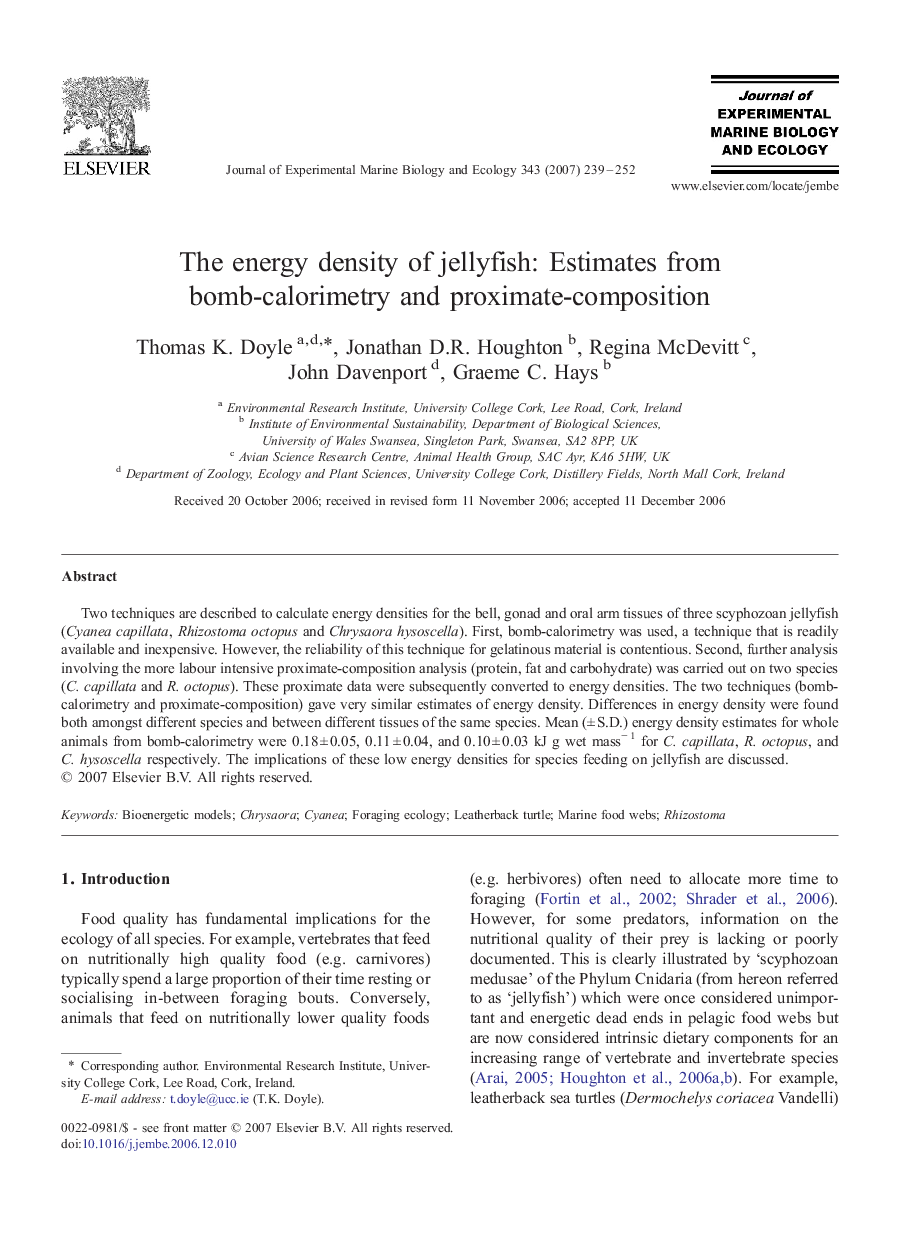| Article ID | Journal | Published Year | Pages | File Type |
|---|---|---|---|---|
| 4397679 | Journal of Experimental Marine Biology and Ecology | 2007 | 14 Pages |
Two techniques are described to calculate energy densities for the bell, gonad and oral arm tissues of three scyphozoan jellyfish (Cyanea capillata, Rhizostoma octopus and Chrysaora hysoscella). First, bomb-calorimetry was used, a technique that is readily available and inexpensive. However, the reliability of this technique for gelatinous material is contentious. Second, further analysis involving the more labour intensive proximate-composition analysis (protein, fat and carbohydrate) was carried out on two species (C. capillata and R. octopus). These proximate data were subsequently converted to energy densities. The two techniques (bomb-calorimetry and proximate-composition) gave very similar estimates of energy density. Differences in energy density were found both amongst different species and between different tissues of the same species. Mean (± S.D.) energy density estimates for whole animals from bomb-calorimetry were 0.18 ± 0.05, 0.11 ± 0.04, and 0.10 ± 0.03 kJ g wet mass− 1 for C. capillata, R. octopus, and C. hysoscella respectively. The implications of these low energy densities for species feeding on jellyfish are discussed.
